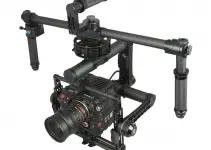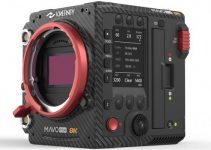There are a lot of things to like about the Canon EOS R5 and the Sony A7S III, two cameras that have pushed many sought-after features into the hands of their user base. As camera-people, we tend to stick with our brand; Canon-people are Canon-people and Sony-people are Sony-people, but it is nice to see how things are going on the other side once in a while just to see what we might be missing.
Sony is there to guide through the darkness of night with their incredible low-light capabilities, and with winter approaching, Canon is keeping all of us warm by producing a camera that overheats after 29 minutes or so. #overheatgate
If you’re stuck between which of these two cameras would be best for your next project, Carl from ProAV TV has an image quality comparison that might help you see which side’s grass is the greenest.
Canon EOS R5 Key Features
- 45MP Full-Frame CMOS Sensor
- DIGIC X Image Processor
- 8K30 Raw and 4K120 10-Bit Internal Video
- Sensor-Shift 5-Axis Image Stabilization
- Price $3,899
Sony A7S III Key Features
- 12MP Full-Frame Exmor R BSI CMOS Sensor
- UHD 4K 120p Video, 10-Bit 4:2:2 Internal
- 16-Bit Raw Output, HLG & S-Log3 Gammas
- 759-Point Fast Hybrid AF
- Price $3,498
Sharpness Tests
In order to be fair, these tests were done with the highest quality recordings available out of both cameras.
For the A7S III, that is XAVC-HS, and for the R5, that is 8K raw – obviously Canon is going to be the clear winner here.
You can easily see the amazing sharpness, color, and image clarity you get while shooting in 8K on the R5. It is, after all, double the resolution of that from the Sony A7S III.
But when the Canon R5 is switched over to the 4K All-I setting, the images from the two cameras look much closer.
Things take an even further turn when we look at the images captured in high-speed from these two cameras. Here, the Canon R5 and the Sony A7S III are both shooting at 120fps.
The A7S III has far more clarity when filming in slow-motion than the EOS R5. This could be a codec issue, but is most likely a result of the R5 having to downsample the image from the sensor so quickly.
It’s throwing away massive amounts of data as fast as it can to keep up with the record speed. The result is still a very nice image, but it is noticeably weaker than the A7S III here.
Overexposure and Underexposure Tests
The ability to correct an overexposed or underexposed image from a camera is a stress test to see how much you can mess up in the field and still get away with it. Here, Carl overexposed both cameras by +1, +2, +3, and +4 EV to see where they’ll start to clip.
Amazingly both cameras are able to be recovered well here, with the edge going slightly to Canon’s R5 even though it isn’t shooting in raw for this test. Both cameras are clipping at +4 EV, but the skin tones on the Sony A7S III are washed out and rather dull looking.
Even more amazing is when you switch the R5 over to raw for the same test – +4 EV on the R5 actually looks better than 0 EV on the A7S III.
Canon’s Cinema Raw Light Codec holds a lot of information in the highlights, and exposing to the right with this camera will actually improve your image quality because it will push down the noise in the shadows and yield a cleaner image.
Unfortunately, you won’t be so lucky underexposing your shots on the Canon EOS R5. Carl takes things down to -1, -2, and -3 EV and things look grittier every step of the way.
The Sony A7S III recovers very well all down to -3 EV, but as you can see, the Canon EOS R5 (in 4K ALL-I) look pretty bad. The lows have developed this weird, ugly green shift, it’s super noisy, artifacts are everywhere, and the best descriptor for the model’s skin is vomit.
Of course, that’s just in ALL-I mode, switch things over to raw on the R5 and it holds up ‘ok’. The lows look fairly washed out and there is a lot of noise, but it’s still recoverable and useable in post.
High ISO Test
You know how this one is going to go. I know how this one is going to go. We all know how this one is going to go. The Sony A7S III is the newest lowlight king of the campground behind it’s older brother’s the A7S and the A7S II. Canon’s EOS R5 didn’t stand a chance at winning, but it didn’t do so badly in raw and with a little noise reduction in post, it can hold its own at up to 25600 ISO (if you really need it).
The A7S line has always had some level of in-camera noise reduction applied at higher ISOs and you can see some image smoothing occurring when you really push the numbers up.
The Canon EOS R5 and the Sony A7S III are definitely two amazing cameras. When they finally start moving into mass shipping and we see these practically put to the test, there are going to be a lot of happy folks out there. You can really make a lot of mistakes in post and recover your shots easily, shoot amazing slow motion, and deliver extra sharp footage with either of these two.
Take your pick, and get to work.
[source: ProAV TV]
Order Links:
Disclaimer: As an Amazon Associate partner and participant in B&H and Adorama Affiliate programmes, we earn a small comission from each purchase made through the affiliate links listed above at no additional cost to you.




